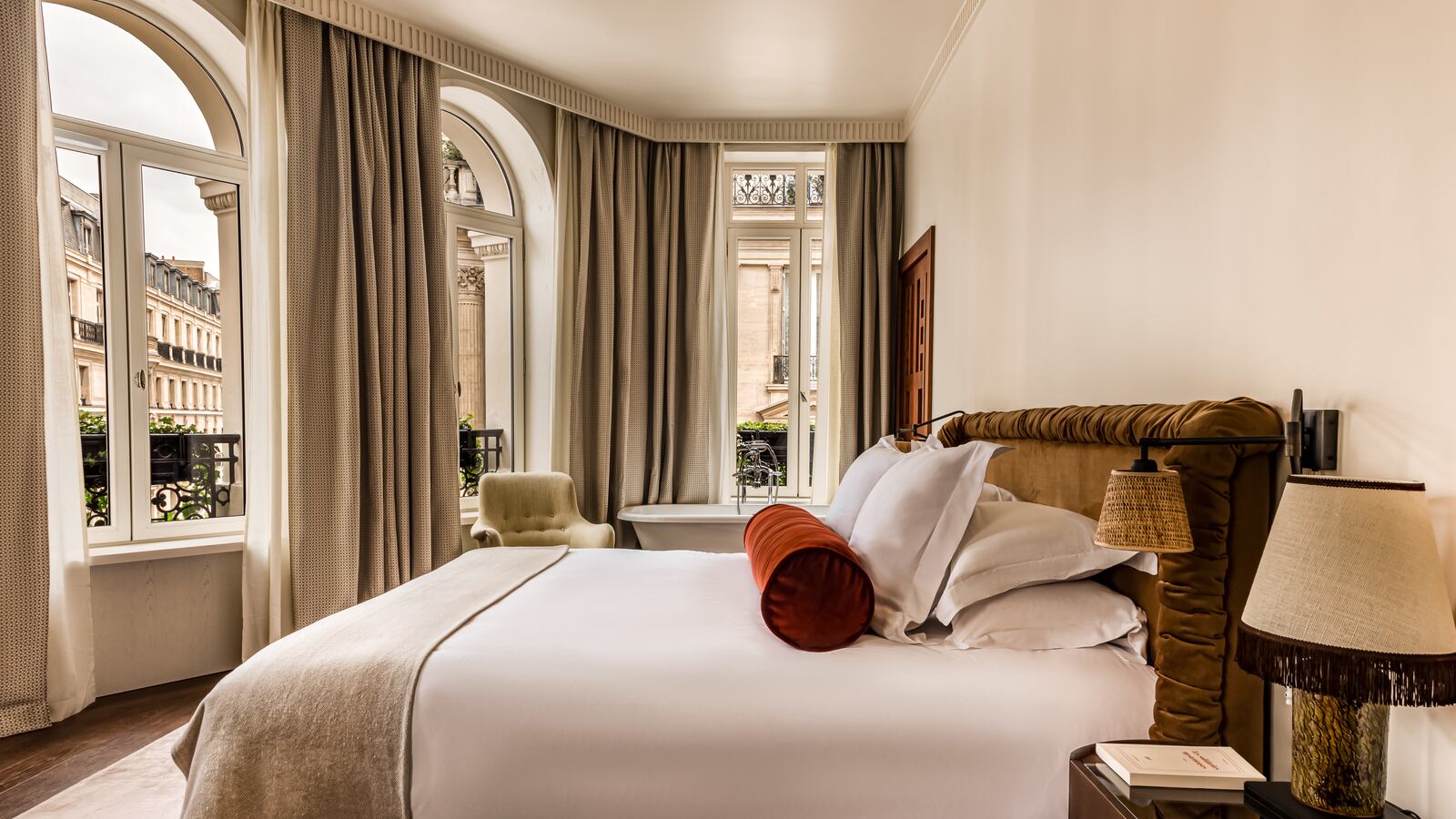Tucked behind the Louis Vuitton flagship on the Avenue des Champs-Élysées, in a classic but unassuming edifice adorned with flowers, is one of the more eagerly anticipated hotels of the year. Its name is the Château des Fleurs.
The hotel opened last fall, and is part of a group of properties that includes the brand new Hotel Norman, the reopening Hotel Balzac, the Relais Christine, and the Saint James Paris. It’s in one of the busiest parts of Paris—the Champs-Élysées is jam-packed with tourists and the surrounding blocks are filled with offices of fashion houses, auctioneers, law firms, and more. And yet, this hotel has managed to forge for itself a quiet spot.

The Château des Fleurs occupies a prime spot on the touristy Champs-Élysées in Paris.
Mr TripperA significant part of feeling like you’ve stepped away from the bustle of the 8th arrondissement is what you walk into once you cross the entrance threshold. The line between fun and zany can be a thin one. But the Barcelona-based firm Quintana Partners has managed to create one of the more memorable and gratifying interiors in Paris in recent years by blending Modernism/Art Nouveau with a dash of Dalí.
From the sculptured-arm door handles, the elongated cutlery, trippy hallway doors, and ceiling lights ringed with little flowers, you will find yourself marveling at every detail matching the vision.
The ground floor is made up of an open-concept lobby, bar, and restaurant. The restaurant is a Korean-French fusion joint called OMA, which was unfortunately closed the nights I was there. Despite not being a huge floor plan, the design is such that the lobby and public spaces feel light and fresh. I especially loved the hammered copper plate on the pink marble fireplace and the mirrored ceiling trimmed with spherical molding. Below the lobby is the hotel’s gym, which was also decorated, this time with an undulating recessed ceiling and colored glass.

The bathroom inside one of the rooms at the Château des Fleurs, Paris.
Mr. TripperThe hotel has just 37 rooms, which creates a very intimate experience. They start at roughly $400 a night, and the hallways to reach them are some of my recent favorites. The designers have enlivened what is often a drab and depressing experience–walking through a hotel hallway–by decorating them with rippling door frames and silver handles shaped like a bent arm.
The rooms themselves are simple but refined, decorated in subdued creams, grays, and browns. The bathroom floors are decorated with hexagonal terracotta tiles and the showers in playful red-and-white stripes.





